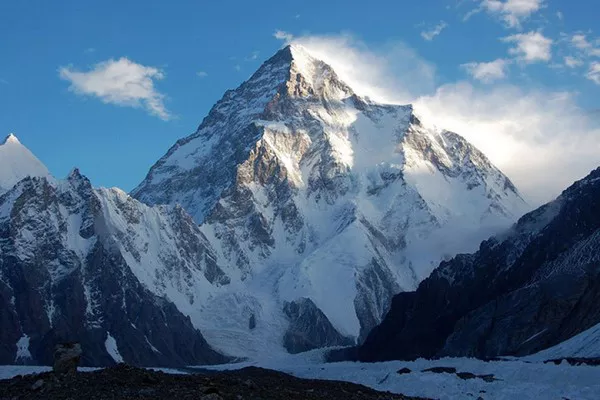Mount Kilimanjaro, the highest peak in Africa, is a magnet for adventurers from around the globe. The journey to its summit, Uhuru Peak, is not just a test of physical endurance but also a challenge of acclimatization due to the mountain’s significant altitude. One of the key stages in this ascent is reaching the base camps, which serve as crucial rest and acclimatization points before pushing towards the summit. This article delves into the altitude of Kilimanjaro’s primary base camps, with a focus on the Marangu Base Camp, and highlights the importance of proper acclimatization.
SEE ALSO: What Are the Best Flat Pedals for Mountain Biking
Specific Altitude of Marangu Base Camp
The Marangu Base Camp, also known as Mandara Hut, is one of the most popular starting points for trekkers taking the Marangu Route. The exact altitude of the Marangu Base Camp is 2,700 meters (8,858 feet) above sea level. This altitude marks the beginning of the climb and is the first significant point where trekkers spend the night before ascending further up the mountain.
Marangu Base Camp is nestled in the lush rainforest zone of Kilimanjaro, characterized by towering trees, dense vegetation, and an array of wildlife. It provides a comfortable environment for trekkers to rest and acclimatize, offering hut accommodations rather than tents, which is a unique feature of the Marangu Route.
Base Camp Specification
Marangu Base Camp is not the only base camp on Kilimanjaro; the mountain has several camps along its various routes, each serving as a rest stop and acclimatization point. Understanding the specifics of these camps is crucial for trekkers to plan their ascent properly.
Machame Camp: Located at an altitude of 3,010 meters (9,875 feet), this camp is the first stop on the Machame Route, one of the most scenic and popular routes on Kilimanjaro. The camp is set in the rainforest zone, similar to Marangu, and is known for its vibrant surroundings.
Shira Camp: Positioned on the Shira Plateau, Shira Camp 1 sits at an altitude of approximately 3,505 meters (11,500 feet). This camp is part of the Shira and Lemosho routes, offering stunning views of the plateau and the Western Breach.
Barranco Camp: At an altitude of 3,950 meters (12,960 feet), Barranco Camp is one of the most famous camps on Kilimanjaro, especially on the Machame Route. The camp is situated below the Barranco Wall, a steep and challenging section of the climb.
Barafu Camp: Located at 4,673 meters (15,331 feet), Barafu Camp is the final base camp before the summit attempt on the Machame, Lemosho, and Rongai routes. This high-altitude camp is a critical point where climbers prepare for their early morning push to the summit.
Base Camp Overview
While the Marangu Base Camp (Mandara Hut) is the starting point for those on the Marangu Route, it’s essential to recognize the diversity of base camps on Kilimanjaro, each catering to different trekking routes. The camps vary in altitude, scenery, and level of difficulty, reflecting the diverse ecosystems and challenges that the mountain offers.
For instance, the Shira and Lemosho routes begin in the western part of Kilimanjaro and converge at the Shira Plateau, providing a longer, more gradual ascent that aids in acclimatization. The Machame Route, often dubbed the “Whiskey Route,” is more challenging than Marangu but offers breathtaking views and a varied terrain. Barranco Camp, famous for its proximity to the Barranco Wall, is a notable landmark where climbers must tackle the steep ascent to continue their journey.
Altitude Acclimatization
One of the most critical aspects of climbing Mount Kilimanjaro is acclimatization. As trekkers ascend the mountain, they are exposed to decreasing levels of oxygen, which can lead to altitude sickness if proper acclimatization is not observed. Altitude acclimatization is the process by which the body gradually adjusts to the reduced oxygen levels at higher altitudes.
At the Marangu Base Camp, the altitude of 2,700 meters provides an initial opportunity for trekkers to begin acclimatizing. While this altitude is not extremely high, it marks the first stage in the body’s adaptation process. As trekkers progress to higher camps, such as Horombo Hut at 3,720 meters (12,205 feet) and Kibo Hut at 4,720 meters (15,485 feet), the need for acclimatization becomes increasingly important.
Spending additional nights at mid-altitude camps like Horombo Hut is recommended to allow the body to adjust before moving higher. The “climb high, sleep low” strategy is commonly used to help with acclimatization. This involves ascending to a higher altitude during the day and then descending to a lower altitude to sleep, which aids in reducing the risk of altitude sickness.
Conclusion
The altitude of Kilimanjaro’s base camps, particularly the Marangu Base Camp at 2,700 meters, plays a vital role in the overall success of the climb. Understanding the altitude of each camp, the routes they are associated with, and the importance of acclimatization is crucial for anyone planning to trek this iconic mountain. Proper preparation, including acclimatization strategies, can make the difference between reaching the summit and falling short due to altitude-related challenges.

